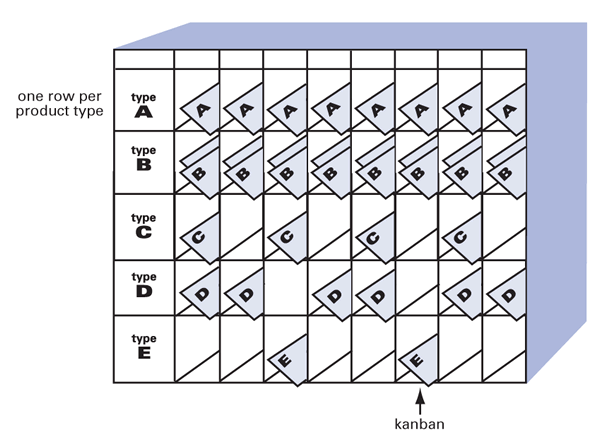Heijunka Box
A tool used to level the mix and volume of production by distributing kanban within a facility at fixed intervals. Also called a leveling box.
In the illustration of a typical heijunka box shown below, each horizontal row is for one type of product (one part number). Each vertical column represents identical time intervals for paced withdrawal of kanban. The shift starts at 7:00 a.m. and the kanban withdrawal interval is every 20 minutes. This is the frequency with which the material handler withdraws kanban from the box and distributes them to production processes in the facility.
Whereas the slots represent the material and information flow timing, the kanban in the slots each represent one pitch of production for one product type. (Pitch is the takt time multiplied by the pack-out quantity.) In the case of Product A, the pitch is 20 minutes and there is one kanban in the slot for each time interval. However, the pitch for Product B is 10 minutes, so there are two kanban in each slot. Product C has a pitch of 40 minutes, so there are kanban in every other slot. Products D and E share a production process with a pitch of 20 minutes and a ratio of demand for Product D versus Product E of 2:1. Therefore, there is a kanban for Product D in the first two intervals of the shift and a kanban for Product E in the third interval, and so on in the same sequence.
Used as illustrated, the heijunka box consistently levels demand by short time increments (instead of releasing a shift, day, or week’s worth of demand to the floor) and levels demand by mix (for example, by ensuring that Product D and Product E are produced in a steady ratio with small batch sizes).
